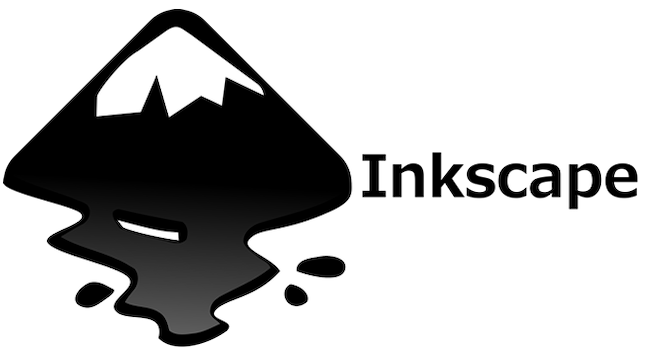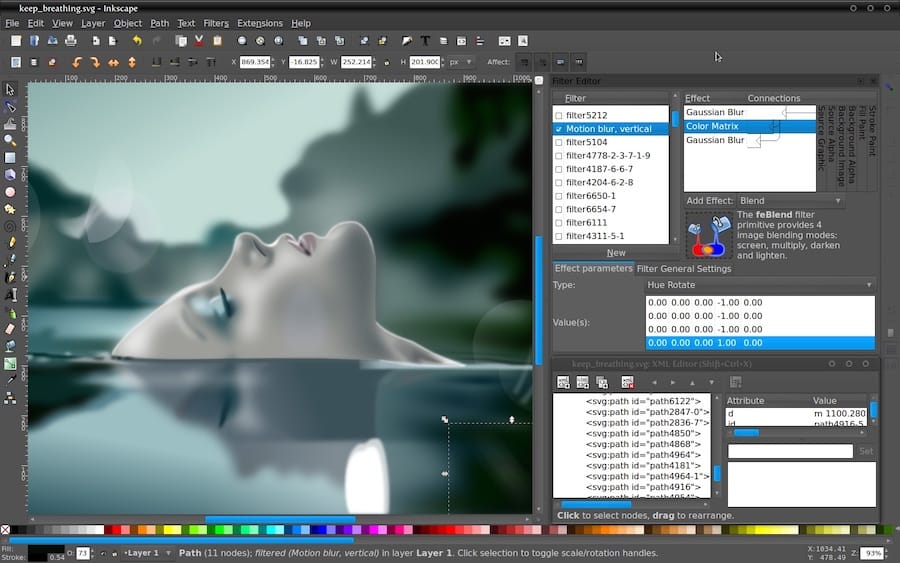How To Install Inkscape on AlmaLinux 9

Inkscape is a powerful, open-source vector graphics editor that has become an essential tool for designers, illustrators, and digital artists worldwide. As AlmaLinux 9 continues to gain popularity as a stable and reliable Linux distribution, many users are looking to install Inkscape on this platform. This comprehensive guide will walk you through various methods to install Inkscape on AlmaLinux 9, ensuring you can start creating stunning vector graphics in no time.
Understanding Inkscape and AlmaLinux 9
Before diving into the installation process, it’s crucial to understand what Inkscape is and why it’s an excellent choice for AlmaLinux 9 users.
What is Inkscape?
Inkscape is a free and open-source vector graphics editor, similar to Adobe Illustrator, CorelDRAW, or Xara X. It uses Scalable Vector Graphics (SVG) as its native format and is capable of creating and editing vector graphics like logos, illustrations, charts, and complex artwork.
Key Features of Inkscape
- Versatile drawing tools
- Object manipulation
- Fill and stroke
- Text support
- Rendering
- File format compatibility
AlmaLinux 9: A Brief Introduction
AlmaLinux 9 is a free, open-source Linux distribution that aims to provide a stable, secure, and feature-rich operating system for servers and workstations. It’s binary compatible with Red Hat Enterprise Linux (RHEL) and offers a robust platform for various applications, including graphic design tools like Inkscape.
Why Install Inkscape on AlmaLinux 9?
Installing Inkscape on AlmaLinux 9 combines the stability and security of this enterprise-grade Linux distribution with the powerful vector graphics capabilities of Inkscape. This combination is ideal for professionals and enthusiasts who require a reliable operating system and a feature-rich design tool.
Prerequisites for Installing Inkscape
Before proceeding with the installation, ensure that your system meets the following requirements:
System Requirements
- AlmaLinux 9 installed and updated
- At least 2GB of RAM (4GB recommended)
- 1GB of free disk space
- A processor with SSE2 support
Necessary Permissions
You’ll need sudo or root access to install packages and make system-wide changes.
Internet Connectivity
A stable internet connection is required to download Inkscape and its dependencies.
Method 1: Installing Inkscape via DNF Package Manager
The simplest and most straightforward method to install Inkscape on AlmaLinux 9 is using the DNF package manager. This method ensures that you get a version of Inkscape that’s compatible with your system and is easy to update.
Updating the System
First, update your system to ensure all packages are current:
sudo dnf update -yEnabling Necessary Repositories
Inkscape is available in the AppStream repository, which should be enabled by default. If it’s not, you can enable it with:
sudo dnf config-manager --set-enabled appstreamInstalling Inkscape
Now, install Inkscape using the following command:
sudo dnf install inkscapeDNF will automatically resolve and install all necessary dependencies.
Verifying the Installation
After the installation completes, verify it by checking the Inkscape version:
inkscape --versionMethod 2: Installing Inkscape via Flatpak
Flatpak is a universal package management system that allows you to install applications regardless of the Linux distribution you’re using. This method can be useful if you want the latest version of Inkscape or if you prefer containerized applications.
Installing Flatpak on AlmaLinux 9
First, install Flatpak:
sudo dnf install flatpakAdding Flathub Repository
Add the Flathub repository, which hosts numerous Flatpak applications:
flatpak remote-add --if-not-exists flathub https://flathub.org/repo/flathub.flatpakrepoInstalling Inkscape via Flatpak
Now, install Inkscape using Flatpak:
flatpak install flathub org.inkscape.InkscapeRunning Inkscape Installed via Flatpak
To run Inkscape installed via Flatpak, use:
flatpak run org.inkscape.Inkscape
Method 3: Building Inkscape from Source
For users who need the latest features or want to customize their Inkscape installation, building from source is an option. This method requires more time and technical knowledge but offers the most control over the installation.
Installing Build Dependencies
First, install the necessary build dependencies:
sudo dnf groupinstall "Development Tools"
sudo dnf install cmake gc-devel boost-devel libxml2-devel libxslt-devel \
gsl-devel double-conversion-devel potrace-devel gdl-devel gtkmm30-devel \
libsoup-devel poppler-glib-devel cairomm-devel glibmm24-devel \
gtkspell3-devel libcdr-devel pango-devel lcms2-develDownloading Inkscape Source Code
Clone the Inkscape repository:
git clone https://gitlab.com/inkscape/inkscape.git
cd inkscapeConfiguring and Compiling Inkscape
Configure and compile Inkscape:
mkdir build
cd build
cmake ..
makeInstalling the Compiled Inkscape
Install the compiled Inkscape:
sudo make installPost-Installation Steps
After installing Inkscape, there are a few steps to ensure it’s set up correctly.
Launching Inkscape
You can launch Inkscape from the command line by typing inkscape, or find it in your application menu.

Basic Configuration
Upon first launch, you may want to configure Inkscape according to your preferences. Go to Edit > Preferences to adjust settings like interface language, theme, and keyboard shortcuts.
Installing Additional Extensions
Inkscape supports various extensions that can enhance its functionality. You can find and install these from the Inkscape Extensions repository or through the built-in Extensions manager.
Troubleshooting Common Installation Issues
While installing Inkscape on AlmaLinux 9 is generally straightforward, you might encounter some issues. Here are solutions to common problems:
Dependency Conflicts
If you encounter dependency conflicts, try updating your system and repositories:
sudo dnf update
sudo dnf clean all
sudo dnf makecachePermission Errors
Ensure you’re using sudo for commands that require elevated privileges. If you’re still encountering permission errors, check your user’s sudo permissions.
Compilation Errors (for Source Installation)
If you face compilation errors when building from source, make sure all dependencies are correctly installed. You may also need to check for any specific requirements in the Inkscape documentation for your version.
Updating and Maintaining Inkscape
Keeping Inkscape updated ensures you have the latest features and security patches.
Updating Inkscape via DNF
If you installed Inkscape using DNF, update it along with your system:
sudo dnf updateUpdating Flatpak Installation
For Flatpak installations, use:
flatpak updateUpdating Source-built Installation
For source installations, you’ll need to pull the latest code and recompile:
cd inkscape
git pull
cd build
cmake ..
make
sudo make installCongratulations! You have successfully installed Inkscape. Thanks for using this tutorial for installing Inkscape on your AlmaLinux 9 system. For additional help or useful information, we recommend you check the official Inkscape website.